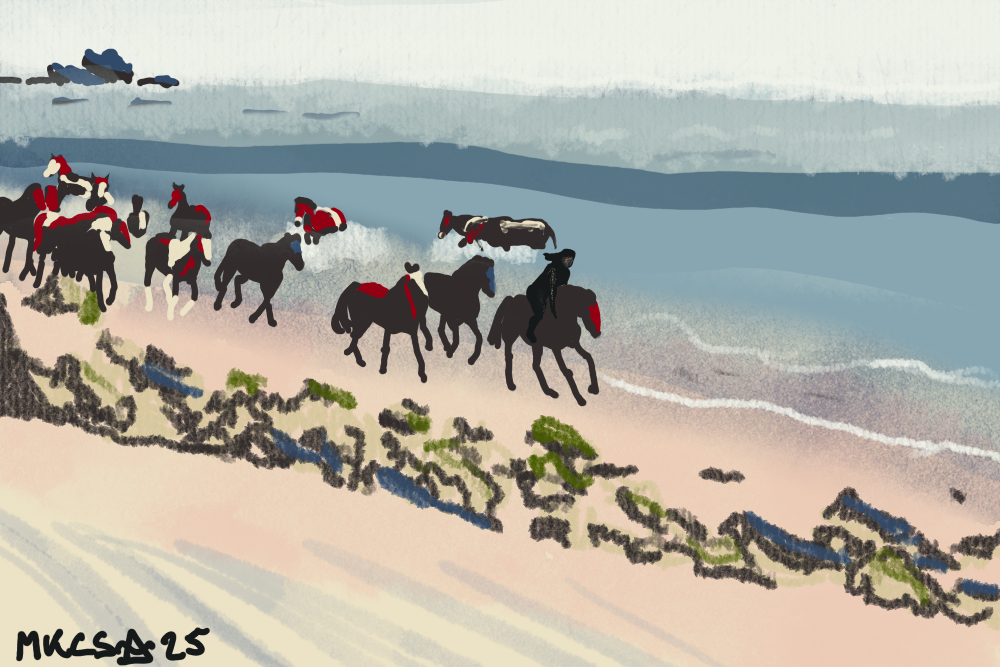Dangerous Spaces and Labyrinth
In both works, a girl is drawn by a charismatic male figure into a fantasy world where she has experiences that symbolise her real-world wants…

I think it has been over ten years ago now since I noticed parallels between Margaret Mahy’s 1991 novel Dangerous Spaces and the 1986 Jim Henson movie Labyrinth.
Margaret Mahy published her young adult novel a few years after the movie came out. Here, I’m looking at Dangerous Spaces as being possibly Mahy’s reaction to the movie, looking at her takes on certain issues in the movie.
Just to be clear, Labyrinth is possibly my favourite movie. It’s certainly one of them. I saw it as a kid and have never stopped loving it. Dangerous Spaces is not at all my favourite book, or even my favourite one of Mahy’s books. But Mahy has some really good points about the movie, if I’m reading her right, and if I’m not, then she has good points about the themes that the movie shares. It’s also a fun book, well worth reading on its own merits.
Parallels
The key parallels I see are the use of the Persephone story of abduction and change, the daemon-lover figures of Jareth and Griff, the older woman who hoards physical objects, the various absent parents, and the answer to the question of what teenage girls want (hint: ask Dame Ragnelle; University of York, 2012).
In Labyrinth, the heroine, Sarah, is a teenage girl with an absent mother, living with her father, stepmother, and new baby brother. She is filled with resentment for her situation and fantasises about being able to escape to a beautiful magical world in which she has power and some of her actress mother’s glamour.
In Dangerous Spaces, Anthea is a teenage girl with absent (deceased) parents, living with her uncle, aunt, and cousins. She is filled with resentment for her situation and fantasises about being able to escape to a beautiful magical world where she is with her parents.
In both works, the girl is drawn by a charismatic male figure into a compelling fantasy world where she has experiences that symbolise her real-world wants, before a final confrontation with the male figure sets her free to return to her real life, having reconciled with her situation and given up at least some aspects of her daydreams.
This has a lot of similarities with the Greek myth of Persephone, in which the young girl, Kore, is stolen away by the god of the underworld, Hades, and returns transformed as the goddess, Persephone. All three stories have a climax in which the Hades figure attempts to keep the girl in his realm (although he partially succeeds in the myth and fails in the book and the movie). Both Dangerous Spaces and the myth are explicitly about death, with the threat of being unable to return to the land of the living hanging over the girl.
In the book, Anthea feels she has no space in the real world. Labyrinth’s Sarah also appears to feel that her space is inadequately hers (with justification, given that her family apparently walk into her room and take her possessions without asking).
Both girls find the idea of a world where they can escape their family and find their own space highly attractive. Anthea daydreams about a remote tropical island with her graceful, peaceful parents swimming in the sea. Sarah dresses up and acts out plays, playing at being a heroic figure.
What girls want
In Labyrinth, Henson uses the story partly to examine the stereotype that teenage girls are attracted to bad guys: Heathcliffe (Charlotte Brontë, 1847), Mr Rochester (Emily Brontë, 1847), and their ilk; the Beast in Disney’s Beauty and the Beast (1991).
Jareth is a hot older guy, who is often petulant in a way that doesn’t really suit his apparent age. His patronising style of flirtation is highly reminiscent of Jane Eyre’s Mr Rochester. Both men present the protagonist with challenges and then change the rules and use verbal putdowns. Like the Beast he gives way to his temper without consideration for the people around him.
Labyrinth seems to present this stereotype, almost as if Sarah is considering it, and then to explicitly reject it. Does Sarah want magic? Absolutely yes. She’s literally acting it out in her play. Does she want a powerful bully as a lover? No. She certainly plays with the idea, but by the end of the movie Sarah is completely clear that Jareth is not an attractive partner, whatever he offers her and however well he dances.
Mahy removes sexuality almost entirely from the plot. The Hades figure in the book, Griff, is both a child and a close relative of Anthea’s, and his tantrums and pouting are much more age appropriate. He’s still highly attractive, but as a charming younger-brother figure, not an inappropriately older boyfriend.
The long-dead boy manages to capture a lot of the creepy qualities of Jareth, but in making him younger than Anthea, Mahy emphasises the childish qualities of the daemon. For Mahy, it is clear that what attracts young girls to a ruler of the underworld is not primarily his potential as a lover, but the power and freedom that magic represents for them within their lives. Young girls want the monster's power and glamour, even when the element of sexual attraction is absent.
Henson shows Sarah toying with the idea of the dangerous lover and rejecting it. Mahy’s story shows that even though the Hades figure in stories like this is often sexually attractive, his danger isn’t the source of the attraction; it’s his potential to create space for growth and change.
Motherhood
Mahy reimagines one of the key side characters from the movie.
The midnight sequence in which Anthea and her aunt Molly discuss Molly’s habit of hanging on to physical objects feels like a direct comment on Labyrinth’s Trash Lady.
The Trash Lady in the movies is a derelict — an unsympathetic portrait of a hoarder. She and the stepmother are the only older female characters with lines, and they are both basically awful warnings. It is important, the movie tells us, not to hang onto physical objects. Do not focus on having a beautiful home, well kept, like the stepmother, or you might end up as an ugly crone, weighed down with ‘stuff’ and trying to trap others. (Notably, both characters tell Sarah what to do to be more like them: date; put on lipstick.)
What does Mahy make of this? In the book, the Trash Lady is transformed into a loving mother: frugal and working hard to create a home and a future.
Molly, Anthea’s aunt, is not at all the glamorous but whiny figure that Sarah’s stepmother is. But she has a lot in common with the Trash Lady. She values ‘stuff’, hanging onto items she doesn’t strictly need and living in a slightly tumbledown home. She’s not elegant or graceful, and Anthea resents the loss of upper-middle-class graces in her new home. But as the book continues, it is made clear that Molly is not a hoarder; she is frugal.
Her value for sentimental and useful items is an important part of her role as the homemaker of the family, and it is a virtue. Molly may not be the prime minister, or a famous actress, and she is definitely hanging onto some things that aren’t really needed, but she loves Anthea and she is making her a home.
Mothers in the movie are presented as the absent but glamorous mother, the Trash Lady, and a styleless, overdressed and sharp stepmother. When Mahy shows motherhood, it is both maternal and vulnerable, if also occasionally angry and overly frugal. Mahy’s visualisation of motherhood allows mothers to be something other than caricatures or idealised absent figures.
It’s interesting to note that one of the things offered by Flora to bring Anthea back to the real world is the opportunity to help a new mother — the dog has just given birth to a litter.
Solidarity
The climax of Labyrinth has always fallen very slightly flat for me.
There has been no real lead-in to the idea that Jareth has no power over Sarah. On the contrary, he has been visibly able to reshape the space around her in ways that present direct physical threats, and she is unambiguously in this space. She may have solved the Labyrinth, but she has no clear way home.
In most fairy tales, this is the part where the hero pulls an iron nail out of their pocket or reveals an existing debt in their favour, and is thrown out of the fairy hill. But Sarah has shown no such forethought. It’s great that she feels independent of her fantasy world, but it hasn’t been given enough plot support to quite hang together for me, even with the foreshadowing of the opening sequence, where we have seen the characters of the Labyrinth as toys in her room.
Jareth’s power has been established as pretty traditional fairy-tale magic, so this new rule really needed to be made clear before Sarah relied on it for her freedom. To escape Mr Rochester, Jane Eyre has to flee into the night. She nearly dies of exposure. Escaping Hades costs Kore six months of each year.
Henson seems to be relying on an Alice in Wonderland (Carroll, 1865) logic in which the Labyrinth is entirely an internal journey. This makes sense when one considers Sarah’s room full of toys. But it is undercut by the owl, Jareth, flying off into the night at the end alone. If he doesn’t exist, why show him watching?
Furthermore, if Jareth doesn’t exist outside Sarah’s head, he loses a lot as a meaningful threat: Sarah’s heroism in risking herself to rescue her brother has been entirely fictional and the risks she has faced are not real risks. She’s playing in a fantasy world where her brother is just a prize, rather than a family member. And if she is dreaming, then she is going to have to wake eventually, so there is no real choice for her to stay with Jareth anyway. His offer is not a real threat if she will leave him regardless of her decision.
Henson is trying to have it both ways, and falling in between.
It is also rather a stretch to suggest metaphorically that the way for a teenage girl to escape from a powerful man suggesting an unwanted relationship is to just say no. It’s not always that simple or safe.
In Mahy’s story, the details of the other world are also based on household objects, but this is just the form the ghost is taking. The danger to Anthea is real. Regardless of Griff’s objective reality, she is at risk of dying and simply choosing to wake up is not an option.
Mahy’s solution is to bring in another character. In the climax of the book, it is not rejecting a proposal that frees Anthea, but rather the support of a peer — her cousin Flora. Flora is following the fairy-tale conventions that have been previously established both in the story and in traditional stories of rescuing someone who has been enchanted. She has followed Anthea in, but kept her grounding in reality. Her only anchor on the fantasy world is Anthea. Her care crumbles the chain that is binding Anthea to Griff.
Griff is not offering Anthea a kingdom; he is dead, and he wants to take her with him because he is afraid to move on. (It is much more explicit here than in Labyrinth that choosing to stay permanently in a non-real world represents death.) Anthea and Flora have not seen eye to eye with each other for most of the book. But they have been developing connections nevertheless, and it is Flora who is able to help Anthea save herself, calling out that she doesn’t have to go, and reaching down a literal hand to pull her back.
This alternative take on the escape from the fantasy world feels solid, providing a workable metaphor for how vulnerable people can escape predatory behaviours through peer support. This also parallels the Persephone myth, where the goddess’s return to the world is enabled by her connection with another goddess.
(The image of the girl riding in to save the day, mounted on one of a herd of wild horses, is just gorgeous. I’ve never come so close to understanding the whole ‘horse girl’ thing before or since.)
Are the works related?
I don’t think Mahy’s book is intended as a retelling of Henson’s movie. They are different stories with different endings. But I do think it may have been influenced by it.
The timing of the book’s release, together with the popularity of the movie, does make Mahy having watched it possible. And in the mid to late ’80s, Mahy was working on scripts for television shows and young-adult fantasy books about girls, giving her even more reason to watch a new movie about a teenage girl.
Conclusions
It makes sense that in Labyrinth, Sarah finishes the story by returning to her magical fantasies, in a safer form, while Anthea and Flora are busy planning their real lives, with aspirations for the future and new puppies.
Sarah’s journey has helped her value her relationship with her brother, but the journey has been more about her relationship with herself than her wider world. She has explored her fantasies and found which parts of them she wants to focus on. She is no longer clinging to her own baby toys but has also stopped trying to rush into adulthood.
Anthea has developed a peer relationship, and this is giving her a new focus, as well as helping to save her from the unexpectedly dangerous fantasy world.
This image of relationships as literally lifesaving is what adds depth to what is otherwise one of Mahy’s simpler novels. Rather than showing a young girl in isolation, finding herself in her inner world, Mahy has focused on how freeing it is for girls to come together to reconcile with their realities. The importance of magic is recognised, but has become a metaphor — they have lives in reality and do not need to seek out the magical world anymore.
There’s space for both of them in the real world.

